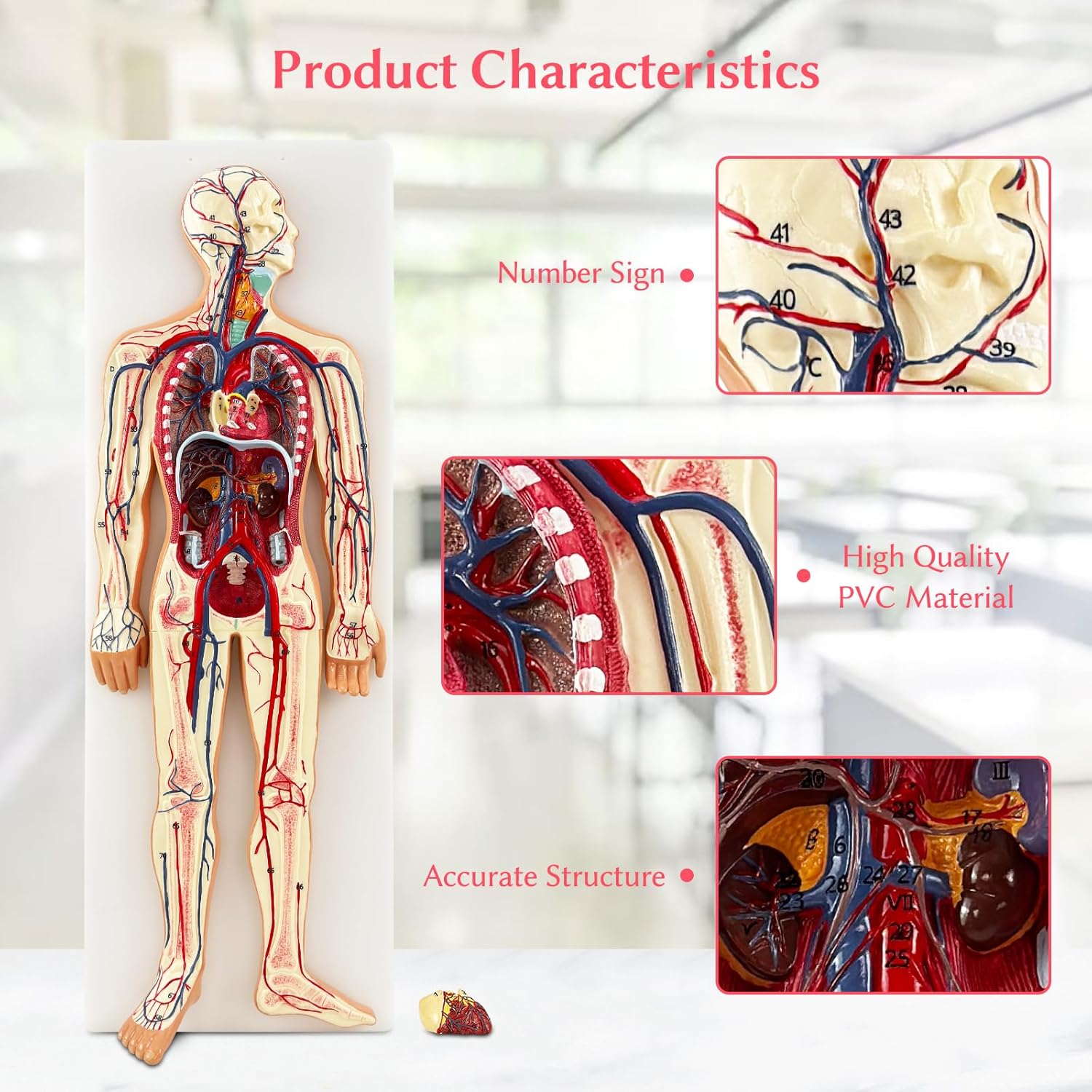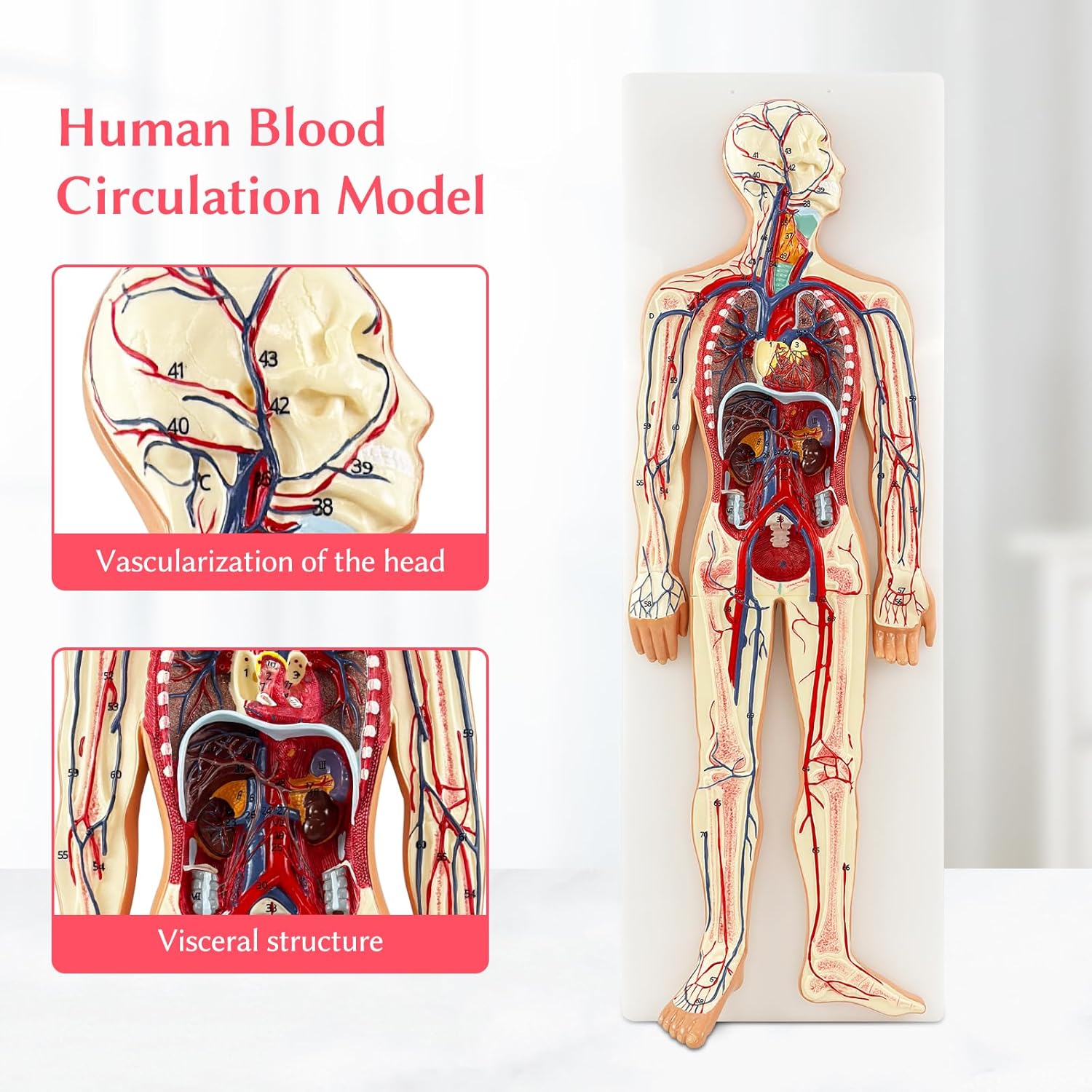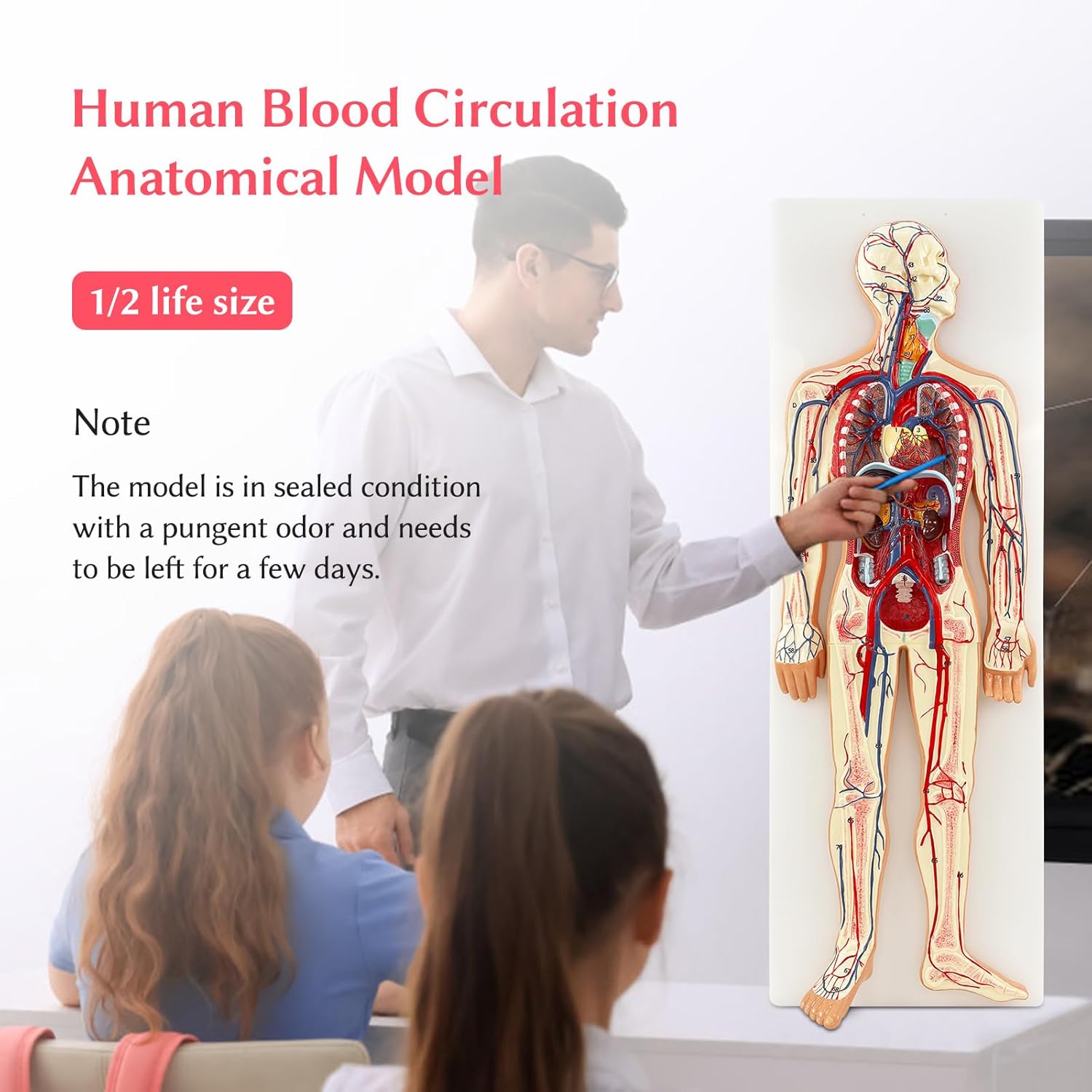Product Introduction of Medical Models for the Circulatory System
I. Product Overview
This is a medical model that highly replicates the human circulatory system, aiming to provide intuitive and precise teaching and reference tools for fields such as medical education, research, and popular science. Through meticulous craftsmanship and professional design, the complex structure and physiological mechanism of the circulatory system are clearly presented.
Ii. Product Features
(1) Precise structural restoration
The model completely presents the four chambers of the heart (left atrium, left ventricle, right atrium, and right ventricle), as well as the large blood vessels connected to them, including the aorta, pulmonary artery, pulmonary vein, superior and inferior vena cava, etc. The network of arteries, veins and capillaries throughout the body is also extremely detailed, down to the tiny branches of blood vessels, which can clearly display the tiny blood vessels and allow users to accurately observe the direction and distribution of blood in different blood vessels.
(2) The color distinction is distinct
The internationally recognized color identification is adopted. The red pipe represents arterial blood rich in oxygen, and the blue pipe represents venous blood with a lower oxygen content. This distinct color distinction makes the blood circulation path clear at a glance, facilitating a quick understanding of the processes of systemic circulation and pulmonary circulation, as well as the oxygenation and material exchange mechanisms of blood between the heart and all organs throughout the body.
(3) Safe and durable materials
Made of high-quality, non-toxic and harmless environmentally friendly materials, it has a realistic touch, good impact resistance and wear resistance, and is not easy to deform or fade. The surface of the model is smooth, easy to clean and disinfect, and suitable for long-term use in various environments such as teaching classrooms and laboratories.
(4) The display of details is rich
In addition to the vascular system, it also showcases the internal valve structure of the heart and the characteristics of blood circulation in some important organs (such as the liver, kidneys, etc.), presenting the special roles of these organs in blood circulation and helping users deeply understand the connection between blood circulation and the functions of various organs.
Iii. Application Scenarios
(1) Medical education
It is applicable to the teaching of anatomy and physiology courses in relevant majors such as medical colleges and nursing colleges. Teachers can use models to visually explain abstract knowledge such as the principle of blood circulation and the working mechanism of the heart, making it easier for students to understand and master. At the same time, it can also be used as a tool for students’ autonomous learning and group discussions to enhance learning outcomes and practical operation abilities.
(II) Medical Research
It provides physical references for cardiovascular disease researchers, helping to analyze the pathological changes in the circulatory system when diseases occur, such as the impact of arteriosclerosis, thrombosis, etc. on vascular structure and hemodynamics, and assisting in the research of new diagnostic methods and treatment strategies.
(III) Medical Science Popularization
Placed in science and technology museums, museums and other places, it popularizes human health knowledge to the public, vividly and graphically presents the mystery of blood circulation, enhances the public’s awareness of the importance of cardiovascular health, and strengthens health care consciousness.
Iv. Instructions for Use
Handling and placement: When handling, handle with care to avoid collision and violent vibration. Place it on a stable and dry display stand or laboratory bench to ensure the stability of the model.
Cleaning and maintenance: Regularly wipe the surface of the model with a mild cleaner and a soft damp cloth to remove dust and stains. Avoid using strongly corrosive cleaners or hard objects to scratch the model.
Storage conditions: If long-term storage is required, it should be placed in an environment with good ventilation, appropriate temperature and moderate humidity to prevent the model from being damaged due to environmental factors.
Post time: Jun-03-2025




